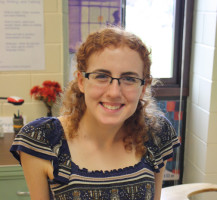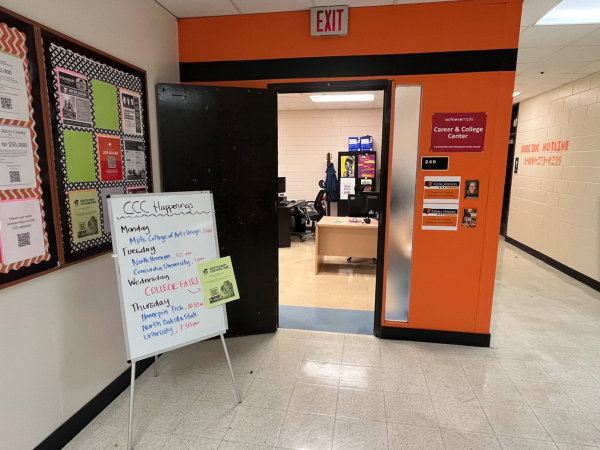Racial inequity prominent in special education
February 6, 2014
Speak appropriately, act appropriately, be in place and learning. These are the four behavioral tenets for students at Harrison Educational Center, not unlike our own Tiger PRIDE principles. Harrison is a Minneapolis high school that focuses on meeting needs of students with emotional and behavioral disorders (EBD).
On December 18, the Star Tribune published an article by Jeffrey Meitrodt profiling racial inequity in special education and discipline in Twin Cities. It focused on Harrison and its sister elementary school, Riverbend. The Southerner decided to take a look from inside the district at how race, discrimination, and special education services connect. We found that while Meitrodt accurately identified a problem in the district, the story at Harrison is more complex than portrayed.
Meitrodt’s article focused on race inequity in special education labels. According to their analysis of Minnesota Department of Education statistics, 36.1% of students in Minneapolis Public Schools (MPS) are black. Of students labelled EBD, 69.8% are black. This means that black students are over-represented among those labeled EBD by more than 33%. At Harrison specifically, 80.6% of the population is African American, according to MPS data. A full 7.0% of black students in MPS have been labeled EBD.
The state of Minnesota has one of the largest achievement gaps in the nation, and labels the highest percentage of black EBD students compared to other states. This is connected to elevated rates of disciplinary referrals and suspensions, as well as overrepresentation in the criminal justice system.
“EBDs are emotional behavior disorders. It…basically makes behavior the reason a student gets labelled and put into a special ed curriculum,” stated Cymone Fuller, a Program Associate and Race-Equity Fellow with the Minnesota Minority Education Partnership (MMEP). The organization works to “increase the success of students of color in Minnesota schools,” according to Fuller.
Students with disabilities are 13% of Minnesota school students, but account for 39% of disciplinary actions according to state statistics. Disciplinary actions can lead to connections with the criminal justice system, contributing to the fact that one in three African American males will be imprisoned during their lifetimes say research action group Suspension Stories.
Based on these numbers, community members and researchers have come to the conclusion that black students are not receiving an equitable education in Minneapolis.
The effects of this discrimination are widespread, and contribute to wider social inequities.
“We know that education really is the key to social and economic mobility,” Fuller said. “If we are secluding and removing a particular group of student more often than others… we are really deterring any of their future hopes of mobility without that education, that foundational piece to move up in the world.”
Fuller continued to describe the school to prison pipeline. This phenomenon is when students are “funneled out of public schools and into the juvenile and criminal justice systems,” according to the American Civil Liberties Union. Many of these students come from backgrounds of disabilities and poverty.
The pipeline is fed by many school systems, including suspensions that overly target students of color and students with disabilities. Research has shown that suspensions don’t work as a remedy for misbehavior.
“If you are suspended your likelihood of dropping out of school increases significantly, it almost doubles your chances of dropping out,” Fuller stated. According to Suspension Stories, black students are roughly 3.5 times more likely to be suspended than white students. “While we think that suspension is a deterrent for future behavior, it actually reinforces it. Because what you’re doing is kicking that student out, basically letting them know that ‘you don’t fit in our school.”
Finally, the juvenile justice system is increasingly involved in school discipline. At South, we have multiple officers in the building.
“Because our school policies have been based off criminal justice system language, …you can turn anything that was an offence in school into a law-breaking offence,” Fuller observed. “If we keep allowing our school resource officers to intervene in school disciplinary issues, that’s a direct pipeline, the school to prison pipeline … Having that direct link like that is just sickening, that’s not what our schools should be doing.” She said that officer involvement in cases of extreme violence is warranted.
Dr. Kim Adams, principal of Harrison, recognizes the consequences of the school to prison pipeline. “I really think about … all the wasted talent,” she reflected. “All the people who should be contributing to society, should be pushing society forward, should be active participants that are disenfranchised for very good reasons. And I think that’s a huge loss for this country.”
This overrepresentation of minorities in special ed programs is a national issue, and begs the question: where does it come from? What causes these huge racial gaps in identification of students with special needs?
Meitrodt’s article placed this issue squarely on the shoulders of special ed programs and schools. The article critiqued the policies of the schools like Harrison and its St. Paul counterpart, attacking their low success rates, discipline policies, and racial makeup.
He wrote, “Besides being sent to schools such as Harrison, these [EBD] students are often isolated in separate classrooms that are light on academics but heavy on discipline, including frequent use of suspensions, school officials acknowledge.” They even went so far as to describe it as a “junior prison.”
“There’s no doubt about it that there’s an overrepresentation of … students of color within those programs,” South teacher Jim Barnhill stated. Barnhill teaches the Life Skills, a Federal Setting 3 program, which means students in this program spend about 60% of their days in a special education classroom. Students who are Federal Setting 4 are referred to a separate school like Harrison for more individual work. Barnhill used to teach at Crawford, now called Riverbend, which is Harrison’s elementary sister school.
“[Meitrodt’s critique] is simplistic,” Barnhill continued, “the first questions that come to mind are this: what are the needs of the student? And does that facility have the means to meet those needs? It is unfair to start with a question of the demographics of that particular location because that almost assumes that the students who are there at that level … don’t need to be there.”
“[The racial gap] is a national issue…that’s not unique to Minneapolis. It’s obviously something we’re trying to address,” Adams stated. “But at Harrison, we get kids who are sent to us. So the overrepresentation issue starts earlier in a child’s school career.”
By the time a student reaches Harrison, they’ve been put on the special ed track. To reach a federal level 3 or 4 program, kids have to have participated in special ed programs for a significant portion of their lives.
When asked about the deeper causes of overrepresentation in identification of minorities with special needs, Fuller took it back to the segregation age.
“It goes pretty deep historically,” Fuller reflected. “We decided to desegregate schools [but ] what we did was bring students of color into a system that was already designed for white kids, and we’re building off of that foundation.”
“”Overrepresentation is an issue of early on, when a student is first identified,” said Barnhill. “Why is this student right now being identified as a person with disabilities?”
“ I really believe that first referral is the place where we really need to be talking about overrepresentation,” stated Adams. This means that, rather than focusing the critique on schools like Harrison, the spotlight should be turned on the processes and biases that identify students as needing special education services.
“An administrator, a teacher [has] a lot of discretion in what [they] decide is misbehavior … That allows for a lot of either conscious or unconscious racial bias to play in,” stated Fuller. Fuller is working to make guidelines more specific so bias will not influence decisions about special education.
Besides addressing issues with labelling students, some solutions focus on the other end of the issue.
The U.S. Department of Education released a resource guide for ‘Improving School Climate and Discipline’ in January of this 2014 that outlines plans for decreasing the racial disparity in suspensions and expulsions.
In the introduction to the Guiding Principles, Secretary of Education Arne Duncan wrote, “I encourage America’s educators to proactively redesign discipline policies and practices to more effectively foster supportive and safe school climates.”
This comes paired with a new Equity and Diversity policy released by MPS earlier in the year, which focuses on addressing the racial gap in disciplinary actions. The Minnesota Minority Education Partnership, Fuller’s organization, has been involved in working with the district on this and other policies.
“We had a huge response from the actual change in the policy,” Fuller stated. Their next step is community and student engagement sessions to educate about the new policy and brainstorm different ways to deal with misbehavior. “It’s really about bringing everybody together so we all have a stake in what happens next,” said Fuller.
On February 12, MMEP is holding a Solutions in Action Youth Summit, and all interested students are invited to attend. The event will involve students in creating action plans for disciplinary reform. Some pathways for involvement might include students acting on advisories for school discipline, or reviewing discipline data on a monthly basis.
In the South special ed programs, one of the main issues is lack of funds. Special Education Assistants (SEAs), faculty who provide essential individual attention, have been cut drastically, leaving teachers overworked and students underserved, according to Barnhill.
“I’m afraid that our society as a whole does not understand the level of financial commitment we need to make in order for all of our students to make the kind of success that they are demanding,” Barnhill stated.
With more funds, schools like South could afford more of the support that Harrison offers: more psychologists, social workers, SEAs, and more training for general ed teachers on working with students having behavioral difficulties. All in all, more students would stay in the classroom, and fewer students would be suspended and referred to Harrison.
“Having supports in general ed schools so that kids can get extra support there [is important], and they don’t have to go into special education,” Adams stated. “I think that we have a long, long, long way to go as far as cultural competence and white privilege. And I think that there are societal factors that perpetuate the stereotypes and the poverty and that cycle that we haven’t been really serious about addressing in this country.”
One student group taking action is Project Open Windows, which aims to make South a more friendly, less-prisonlike place by painting windows on the walls. The thought is that making a more friendly physical environment will create a better personal environment too.
“It’s important for young people to understand what’s going on in their schools,” Adams said. “And advocating for equality, advocating for access, and in some ways, really educating the adults.”












